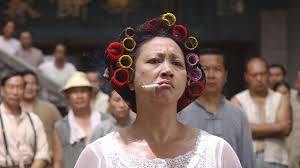India, too, is copying the Chinese economic model. The government says free trade has reached its limits, and so has been raising tariffs for five years. It has offered subsidies as high as 50% for some sectors like chip fabrication. Its PLI is a variation of Chinese industrial policy with the same aim – using initial subsidies to kickstart important sectors with the hope of achieving scale economies that within five years make further subsidies unnecessary.
Posters plastered across billboards proclaim that India is the Vishwaguru (teacher of the world), and Voice of the (Global) South. Yet, China makes the same claim, with far more to show. Once on par with India, its per-capita income has shot up to $12,150 against India’s $2,600. It has attained superpower status, second only to the US.
Once accused of stealing Western technology, it has become global tech leader in several fields, including solar and wind energy, batteries and electric cars. The Australian Strategic Policy Institute has just reported that China is ahead of the US in 37 of 44 technologies that it examined, across defence, space, AI, advanced materials and quantum technology. That is stunning.
China’s Belt and Road Initiative (BRI) has created the biggest-ever combination of roads, railways and pipelines across continents. India has nothing remotely similar. China has overtaken the West as chief financier of developing countries. Many African countries that once toed the US line now toe the Chinese line because of economic links.
China’s model combines political autocracy with competitive markets plus industrial policy to promote specific sectors. It has subsidised various sectors aiming to create scale economies that lower prices to the cheapest in the world. Every province subsidises its companies, creating fierce domestic competition that lowers prices and induces fast technology upgradation, aided by a strong university producing lakhs of engineers per year.
The political part of the model is being aped across the world. Democracies appear weak and chaotic in many developing countries, so coups and dictators are common. From the Atlantic Ocean to the Red Sea, dictators or anarchy-inducing coups have replaced democracies. Some strongmen are allied with jihadists, while others claim they alone can combat radical Islam.
Tunisia and Niger are recent additions to older authoritarian regimes like Burkina Faso, Mali, Chad, Central African Republic and Sudan. Russia’s Wagner Group and other mercenaries are preferred to French or UN troops by strongmen. India may claim to be the mother of democracies. But, if so, its African ‘children’ are denying their parentage.
The economic part of China’s model has proved so successful that the West is aping it. US President Donald Trump started by abandoning the preceding US ideology of ever-freer trade by imposing high tariffs to bring back industries lost to globalisation. He then selectively targeted strategic Chinese goods.
The same policy has been followed in vastly expanded form by Joe Biden, who has maintained the tariffs and proposed the greatest subsidies the world has ever seen for strategic industries in his so-called Inflation Reduction Act (IRA) and CHIPS (Creating Helpful Incentives to Produce Semiconductors) and Science Act. These will provide a total of $624 billion in subsidies, tax credits and loans to claw back world supremacy in electronics and green technologies.
Biden may be aiming to get the better of China, but Europe complains that his subsidies will crush European competitors. So, Europe too looks like following the Chinese path of high subsidies to benefit key sectors, though this will require tweaking its rules. Industrial policy has become the policy du jour across the world.
This is fragmenting a world economy once characterised by ever-freer trade and investment flows. IMF warns that this fragmentation will slow world growth. The West thought integrating China into world trade would make it more like the West. Instead, China has used it to push its own model, which it proclaims is evidently superior. It has achieved trade and industrial supremacy in sector after sector. This is now seen as a strategic threat. So, the West is clamping down on technology transfers.
The US does not want to delink from China – the two are so closely linked that decoupling would be disastrous for both. Instead, it seeks to derisk economic relations, curbing strategic flows, but allowing commercial ones.
What lessons is the rest of the world learning? Within Asia, Vietnam has most closely copied the Chinese model with stunning success. It has attracted the most companies leaving China, and become the fastest-growing Asian country in GDP and exports. China’s BRI has hugely boosted infrastructure in other Asian countries. Pakistan is in trouble, but will survive. So will the China-Pakistan Economic Corridor (CPEC), with some debt write-offs.
India, too, is copying the Chinese economic model. The government says free trade has reached its limits, and so has been raising tariffs for five years. It has offered subsidies as high as 50% for some sectors like chip fabrication. Its PLI is a variation of Chinese industrial policy with the same aim – using initial subsidies to kickstart important sectors with the hope of achieving scale economies that within five years make further subsidies unnecessary.
The jury is still out on this. Earlier attempts at subsidising domestic industries in the Nehruvian era failed. Possibly some, though not all, of the newly subsidised industries will become globally competitive, like Chinese industries. But, if so, it will be because India has become more of a chela than a guru.
This article was originally published by The Economic Times on September 12, 2023.


